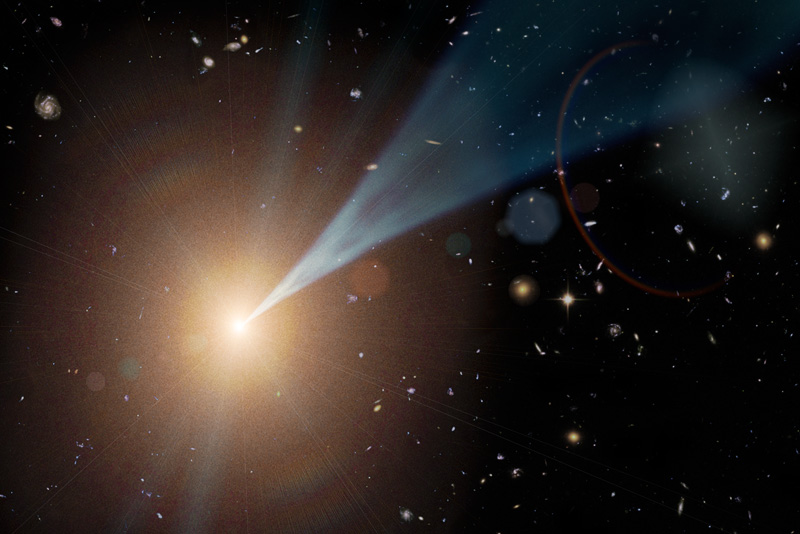



|
Apr. 12, 2012 - Skies Ablaze With Blazars 1. Cosmic Jets Coming at You This artist's concept shows a "feeding," or active, supermassive black hole with a jet streaming outward at nearly the speed of light. Such active black holes are often found at the hearts of elliptical galaxies. Not all black holes have jets, but when they do, the jets can be pointed in any direction. If a jet happens to shine at Earth, the object is called a blazar. Blazars are categorized differently than other active black holes with jets because they have unique properties when viewed by telescopes. They give off a full range of light, dominated by high-energy gamma rays. As particles in the jets are accelerated to almost the speed of light, they give off a specific infrared signature, which NASA's Wide-field Infrared Survey Explorer (WISE) can detect. Astronomers have taken advantage of this fact, and used the WISE all-sky catalog to uncover more than 200 new blazars so far. Image credit: NASA/JPL-Caltech
2. Lone Blazar This image taken by NASA's Wide-field Infrared Survey Explorer (WISE) shows a blazar -- a voracious supermassive black hole inside a galaxy with a jet that happens to be pointed right toward Earth. These objects are rare and hard to find, but astronomers have discovered that they can use the WISE all-sky infrared images to uncover new ones. So far, researchers have found more than 200 new blazars, and they say WISE has the potential to find many more. Infrared light with shorter wavelengths is colored blue; and longer wavelengths are red. The blazar appears white compared to the other galaxies because it's giving off infrared light at all four of the infrared bands used to make this image. Some of the infrared radiation coming from the bazar is extremely peculiar. Galaxies often shine in infrared light due mainly to their cold dust; in this case, most of the observed radiation -- called synchrotron -- arises not from the host galaxy but from particles in the blazar's jets accelerating to nearly the speed of light. Image credit: NASA/JPL-Caltech/Kavli
|
||||||||||||||||
|
|
|||||||||||||||||
|
|||
